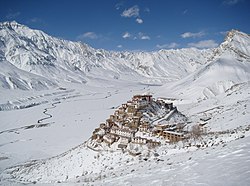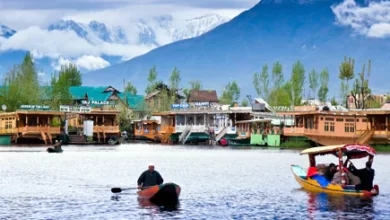8 days Spiti Valley trip

Introduction
If you’re looking for a peaceful location across India, for a trip don’t stop yourself from visiting the beautiful Spiti Valley. Located in the high Himalayas in the northeastern state of Himachal Pradesh. Spiti means “ middle land “ the land between Tibet and India, it’s the coldest desert mountain valley. Surrounded by high mountain ranges, this place is home to hundreds of semi-conductor “ Gaddi “ sheep. Spiti valley is a research and cultural for Buddhists, many monks and lamas receive education here. The Spiti Valley has many eye-soothing places to visit.
-
Tabo Monastery: –
Known as the Ajanta of Himalayas, Tabo Monastery is the oldest and continuously operated Buddhist monastery in India and the Himalayas. Founded on 996 CE the ancient monastery is located in Tabo village, on the bank of the Spiti river. It is an isolated valley with a population of 10,000. People who value serenity adore this place. In contrast to other monasteries in the valley, which are perched on hills, the Tabo hamlet is located in a bowl-shaped level valley, and the monastery is likewise located there. The hall of the monastery is filled with collections of thankas(scroll paintings), manuscripts, well-preserved statues, and extensive murals.
-
Pin Valley: –
Pin Valley is famous for its mesmerizing bio reserve. The Pin Valley National Park was established on 1958, it spans over 675 sq. Kms area of the valley. It is home to many rare animals. A variety of endangered species, including the Snow Leopard and Siberian Ibex, have natural habitats in the park’s snow-covered, unknown higher reaches and slopes. The park provides a haven for birds during the summer, including Himalayan Snowcocks, Chukar Partridges, Snow Partridges, Finches, and Choughs.
The vegetation in the biosphere is not dense and largely made up of Himalayan Cedar(Cedrus Deodara) groves and Alpine trees due to the high altitude and harsh climate. Along with the bio reserve, the Tabo village is also a place fun lovers will desire to go to. The local archery competition and Sunchock ceremony are a treat to watch. Also, you can witness rare Chamurthi Horses around the village.
-
Chandra Taal Lake: –
A dream destination for tourists and high-altitude trekkers. Located at 14,100 ft. this place is a hidden paradise. Chandra Taal, which means lake of moon, the name is justified by its beautiful crescent shape. It is a sweet water lake. This region is home to Snow Leopard, Snow Cock, Chukar, Black Ring Stilt, Kestrel, Golden Eagle, Chough, Red Fox, Himalayan Ibex, and Blue sheep.
-
Mudh Village: –
At the height of 12,500 ft. At the bank of the Pin river, the alluring Mudh Village is located at the base of the Parbati hill range. Mudh Village is the last village on the Spiti side. This scenic village is famous for its Buddhist nunneries. The ruins of Lyungti Khar, a fort built by the Kullu Rajas are one of the most attractive places.
-
Kunzum Pass: –
A paradise for the photographer Kunzum Pass is at the height of 14,931 ft. above sea level. Also known as Kunzum La is a high mountain pass in the eastern Kunzum Range of the Himalayas. It is the highest motorable mountain pass in India, which provides a heavenly 360° view of the Bara – Shigni glacier which is the second highest glacier in the world. It is the best place for bike travelers. Chandra Taal is located only 15 km away from Kunzum La, this route is the most scenic landscape to pass. Through the Kunzum La, one can witness the jaw-dropping vista of the Chandraprabha and the spectacular sight of Spiti Valley.
-
Dhankar Monastery: –
Dhankar Monastery is located in the Lahaul and Spiti district of Himachal Pradesh. It is one of the ancient monasteries around the world, built 1000 years ago. It provides the most breathtaking vista of the Spiti Valley.
-
Key Monastery: –
Key Monastery was founded by Dromton around the 11th century. It is located at 13,668 ft. On top of a hill close to the Spiti river. It is a center for religious training for aspiring lamas. Over 300 lamas and Buddhist students study here. Key Monastery is an example of 14th-century monastic architecture, which is a design influenced by Chinese monasteries.





